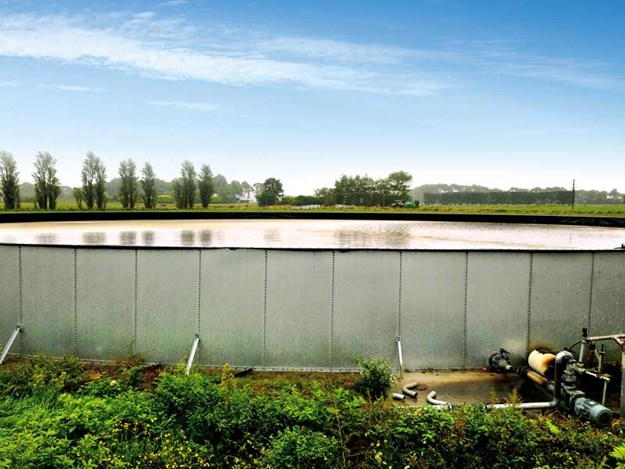Farm advice: Effluent storage and irrigation systems
What’s the best effluent storage and irrigation system? DairyNZ’ s effluent expert talks about some the pros and cons of each.
With more effluent storage and irrigation options available over the last decade, it can be hard to decide which one to pick. So, which is the best?
From my point of view, each has pros and cons and it’s largely dependent on your farm and what factors are important to you.

For those of you considering upgrading or installing an effluent storage or irrigation system, I thought I’d run through some of the key benefits and trade-offs with each.
Effluent storage
Traditionally, ponds have been the go-to for a number of years. And it’s easy to understand why. They’re reliable and generally the most cost-effective option.
It’s also easy to tell when they’re getting full and relatively easy to agitate to remove solids, provided you leave good access for stirring equipment.
But they’re not a great option for farms with high-water tables, in which case, they need to be built above ground. If the farm has no hills, or spare soil to mine (and heaps is needed) to build the pond above ground, it can get expensive to truck fill in.
Tanks are a good alternative for those on high-water tables. They’re super quick to install (usually two or three days) and some see them as a tidier storage option.
They’re also easier to cover than a pond to prevent rainfall but usually require level indicators to know how much effluent is in them.
If your site is suitable for a pond, a tank is generally a more expensive option. Bladders are the latest innovation in effluent storage. But just because they’re the newest, doesn’t necessarily mean they’re the best fit for your farm.
They’re cost-effective for storing small volumes, minimise odour, eliminate rainfall, and are safe as they’re fully enclosed and fenced off.
However, they’re more expensive than ponds for those needing large storage volumes and can be difficult to determine how full they are.
While they eliminate odour, covered effluent often goes anaerobic and this can create significant odours when irrigating. Also, as there’s no ability to use mechanical agitation, solids could potentially become an issue.
Irrigation systems
There are three main types: twin boomed rotating, sprinklers, and travelling rain gun. While traditional twin boomed rotating irrigators have been around for a long time, they’ve come a long way over the last two decades and perform quite well.
They’re easy for most staff to manage, travel up the paddock with runs of around 250 metres and spreading widths of up to 30 metres, generally cope with raw effluent and have moderate flow rates for daily pumping volumes.
Sprinklers, which were largely developed to deal with wet Southland soils, have low application rates (like a gentle rain shower) and low application depths, if shifted regularly.
Because they have low application depths, many are needed to achieve reasonable daily pumping volumes or shifted multiples times each day.
They’re also best suited to an effluent storage system that separates solids, otherwise the nozzles tend to get blocked.
Because they don’t travel, they also require regular shifting throughout the day. Travelling rain guns are the latest irrigation technology. Larger nozzles and significant pressure allow them to cover big areas with low application depths and high daily pumping rates.
However, they require relatively high pressure and flow rates, so won’t work well if put on the end of an old pumping system. Solids can also be an issue for blocking the turbine, so some sort of solids removal is recommended.
As I’ve said previously, if you’re looking at upgrading your system, talk to an accredited company to make sure you get the right system for your farm. This is my last column in the series, and I hope you’ve found the information in them useful.
For more information about effluent storage and management visit dairynz.co.nz/effluent.
See more farming machinery for sale in NZ
Keep up to date in the industry by signing up to Farm Trader's free newsletter or liking us on Facebook



.jpeg)
.jpg)
.jpeg)

.jpg)
.jpeg)
.jpg)
.jpeg)






